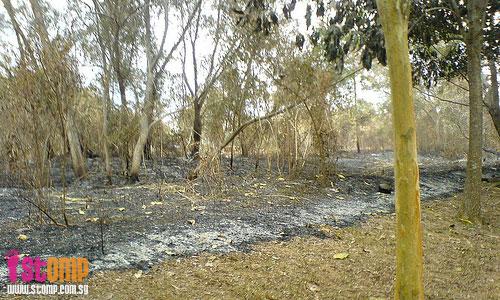
YW was cycling along Upper Serangoon Road when he noticed a huge section of bushes burnt to the ground, leaving only ashes. This brings to mind the raging bushfire in Australia, which has claimed the lives at least 180 people at last count. He says:
"I was just cycling through the area, and for a moment I thought, 'Wow, the bushes all cleared, very nice. It's kind of like autumn.'
"Then I realised something, 'Oh my god it's a bushfire aftermath!'
"You can see how clear the path was after the bushfire.
"Made it kind of scary to cycle through that whole area you know?
"Oh, I pin-pointed that place, it seems like Google updated the map as well.
"By the way, the place that got devoured by flames was huge!
"Now you can even see into the cycling path from the road!
"I am not sure when it happened, I cycle through here often to my friend's place, so I would say it definitely happened two or three days ago.
"oh yeah, the smell was 'horigible', that's like terrible and horrible coming together. It was worse than charcoal!"




Go here for relevant news articles and related Seen on STOMP posts on bushfires in Singapore
I'm trying my best to ignore the cringe-worthy text. (Seriously, 'horigible'?)
Coincidentally, earlier this morning, I was discussing with one of my classes how a lack of rain can lead to bushfire. A few of my students mentioned that they had witnessed the effects of these fires, either by seeing the smoke from their homes, or travelling past the burned sites.
Although some of the wildlife living in these patches of scrub and belukar would be adversely affected by the fire, it is likely that the area will soon be quickly repopulated. In any case, the devastation and impact of these localised wildfires is nothing compared to the tragedy that has struck parts of Australia. I certainly hope that this atypical spate of hot and dry weather is not a sign of a long-term shift in our weather patterns. Unlike savanna and sclerophyll communities, I don't think our local vegetation is adapted to survive regular cycles of burning and regrowth.
By the way, I'm doubtful that Google has actually updated its satellite images